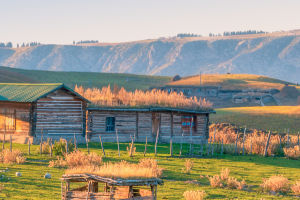Wind power is a form of renewable energy that is generated by harnessing the kinetic energy of the wind to produce electricity.
Wind turbines are machines that convert wind energy into electricity. The use of wind energy dates back to ancient times when windmills were used to grind grain and pump water. In recent times, wind power has become increasingly popular as a clean and sustainable alternative to fossil fuels.
The history of wind power can be traced back to ancient Persia, where windmills were used to grind grain as early as 200 BC. The first windmill in Europe was built in the 12th century in England, and windmills became widespread across Europe over the next few centuries. In the 19th century, windmills were used to pump water for irrigation in the United States.
The modern development of wind power began in the 1970s, with the oil crisis and concerns about the environmental impact of fossil fuels. The first modern wind turbine was developed in Denmark in 1975, and the first wind farm was built in California in 1981. Since then, wind power has become one of the fastest-growing sources of renewable energy in the world.
There are two main types of wind turbines: horizontal-axis turbines and vertical-axis turbines. Horizontal-axis turbines are the most common type, with the blades rotating around a horizontal axis. Vertical-axis turbines have blades that rotate around a vertical axis, and are less common but can be more efficient in certain conditions.
Wind turbines can be installed onshore or offshore, and larger turbines are more efficient than smaller ones.
One of the main advantages of wind power is that it is a clean and renewable source of energy. Wind turbines produce no emissions or pollutants, and do not contribute to climate change. Wind power is also a domestic source of energy, reducing reliance on imported oil and gas. In addition, wind power can create jobs and stimulate local economies, particularly in rural areas.
There are many practical examples of wind power around the world. The United States is the second-largest producer of wind power in the world, after China. Texas is the state with the most wind power capacity, and wind power provides about 20% of the state's electricity. Iowa, Oklahoma, and Kansas are also major wind power states.
In Europe, Denmark is a leader in wind power, with over 40% of its electricity coming from wind. Germany, Spain, and the United Kingdom are also major producers of wind power.
Offshore wind power is becoming increasingly popular as a way to harness the stronger and more consistent winds found over the ocean. The world's largest offshore wind farm is currently under construction off the coast of England, with a planned capacity of 3.6 GW. Other major offshore wind projects are being developed in Denmark, the Netherlands, and China.


